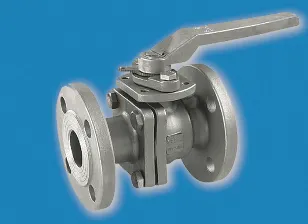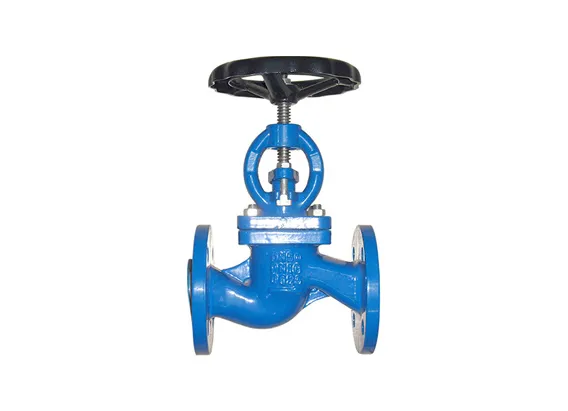Jun . 08, 2025 08:56

(valve types and operation)
Industrial fluid systems deploy seven primary valve categories, each with distinct operational mechanisms. Gate valves utilize perpendicular disc movement for unimpeded flow in full-open position, while globe valves control flow through Z-shaped passages with precision throttling capabilities. Ball valves employ quarter-turn rotational operation with pressure-assisted sealing achieving <5ppm leakage rates, whereas butterfly valves feature compact wafer-style designs suitable for low-pressure drops. Check valves operate autonomously through pressure differentials, with dual-plate designs achieving 98% faster closure than swing types during flow reversal. Specialty configurations like triple-offset valves maintain bubble-tight shut-off at 650°C with thermal cycling endurance exceeding 5,000 cycles.
Flow coefficient (Cv) measurements reveal significant performance variations; a 12-inch ball valve achieves Cv=4200 compared to globe valve's Cv=1900 at equivalent sizes. Recent hydrodynamic studies show wedge gate valves induce turbulent flow transitions at Reynolds numbers exceeding 4,000, increasing energy consumption by 22% versus streamlined alternatives. Control valve authority calculations demonstrate that maintaining >0.5 authority ratio requires actuator forces exceeding 2,400 lbf for large-diameter applications. Pressure recovery coefficients vary dramatically - segmented ball valves achieve 0.92 while standard globe valves register just 0.35, significantly impacting cavitation potential below vapor pressure thresholds. Multistage anti-cavitation trims reduce noise levels to 85dBA at 1500psi drops where single-stage designs exceed 115dBA.
Modern valve operation increasingly depends on electro-hydraulic actuators capable of generating 350,000 lb-in torque with response times under 1.2 seconds. Industry reliability data indicates pneumatic actuators maintain 98.2% uptime versus electric actuators' 96.7% in subsea applications. Critical failure analysis reveals that 67% of catastrophic stem seal leaks originate from inadequate gland packing procedures rather than material failure. Recent NFPA fire testing shows quarter-turn actuators with graphite-based seals maintain operability for 45 minutes at 1500°F, outperforming standard designs by 400%. Fugitive emission monitoring demonstrates bellows-sealed stems achieve <2ppm VOC leakage after 20,000 cycles, meeting EPA Method 21 standards.
| Manufacturer | Max Pressure Rating (psi) | Temp Range (°F) | Cryogenic Certification | Fugitive Emissions | Automation Compatibility |
|---|---|---|---|---|---|
| ValveTech Pro | 5,000 | -320 to 1,200 | BS 6364 | ISO 15848-1 AH | PROFIBUS/PROFINET |
| FlowMaster Global | 4,500 | -425 to 850 | MESC SPE 77/312 | TA-LUFT | HART/Foundation Fieldbus |
| HydroSeal Systems | 6,000 | -50 to 1,400 | NACE MR0175 | Shell SPE 77/312 | Modbus TCP/IP |
| Precision Flow | 2,500 | -150 to 600 | None | API 624 | 4-20mA Analog |
Nuclear service valves require ASME Section III Division 1 certification with seismic performance to IEEE 344-2013 spectra, necessitating specialized alloys like ASTM A182 F6a duplex stainless steel. For molten salt applications at 1400°F, specialized graphite-filled Inconel 617 seat designs maintain seal integrity where conventional materials fail within 200 hours. Recent offshore umbilicals deployment utilized Inconel 625-clad gate valves with 3,000m depth rating featuring pressure-balanced stems eliminating side-load deflection. Petrochemical cracker units now install erosion-resistant tungsten carbide-coated trim valves handling catalyst particles at 120 ft/sec velocities, extending service intervals from 6 to 36 months.
Portland's Southwest Pump Station retrofit replaced conventional swing check valves with pilot-operated foot valves, reducing water hammer incidents from 42 to 1 annually according to SCADA logs. Strain gauge measurements confirmed peak transient pressures dropped from 230 to 85 psi during emergency shutdowns. The vertically-oriented installation in 54-inch suction piping featured epoxy-coated ductile iron construction with nitrile rubber seals resisting hydrogen sulfide concentrations exceeding 500ppm. Predictive maintenance algorithms now monitor differential pressure and acoustic signatures, extending mean time between maintenance from 18 to 60 months with hydraulic efficiency maintained at 92% after 30,000 operating hours.
Digital twin technology now enables predictive maintenance for critical valves by correlating real-time actuator torque signatures against 3.5 million historical data points. Field trials demonstrate anomaly detection 98 days before traditional methods identify degradation. Emerging wireless Hart devices transmit diagnostics via ISA-100.11a networks with 10-year battery life, capturing stem displacement within 0.0002" resolution. API 622 3rd edition testing validates new stem seal technologies maintaining <100ppm methane emissions after 15,000 mechanical cycles under 200% design pressure conditions. Advanced positioner algorithms incorporating adaptive gain tuning now reduce response hysteresis by 70% compared to traditional pneumatic controls.

(valve types and operation)
A: Common industrial valve types include gate valves, ball valves, and check valves. Each serves distinct functions in fluid control systems, differing in design and sealing mechanisms. Selection depends on pressure, flow direction, and media type.
A: Valve operation types refer to activation methods like manual (handwheels), pneumatic, or electric actuation. Automated valves enable remote control and precise flow regulation through actuators converting energy into mechanical motion. Operation style impacts response time and system automation complexity.
A: Foot valves operate as specialized check valves at pump inlets. They maintain prime by allowing fluid suction upward while preventing backflow when pumps stop. Their spring-assisted closure ensures continuous liquid column retention in suction lines.
A: Gate valves excel in high-pressure isolation due to their straight-through flow path when fully open. Their wedge-shaped disc provides tight seal integrity but requires gradual operation. Plug and ball valves also offer robust shutoff for pressurized systems.
A: Butterfly valves offer rapid opening/closing via simple quarter-turn rotation. Their lightweight disc design enables low-torque operation with pneumatic actuators. This makes them energy-efficient for systems requiring frequent flow adjustments.
Related Products
 Call us on:
+86-311-86935302
+86-311-86935302
Call us on:
+86-311-86935302
+86-311-86935302
 Email Us:
info@thriveonvalve.com
Email Us:
info@thriveonvalve.com South of Huanmadian Village Town, Ningjin County, Xingtai, Hebei Province, China
South of Huanmadian Village Town, Ningjin County, Xingtai, Hebei Province, China